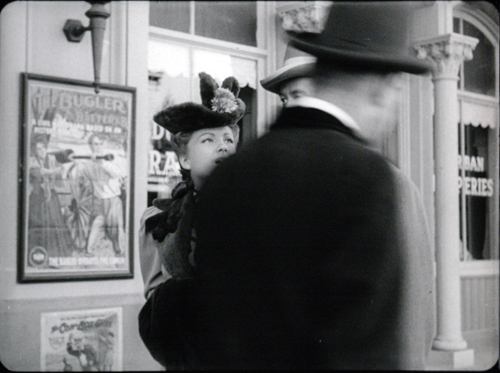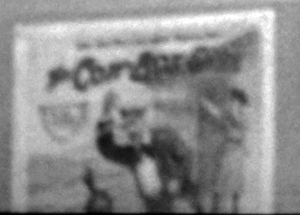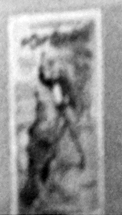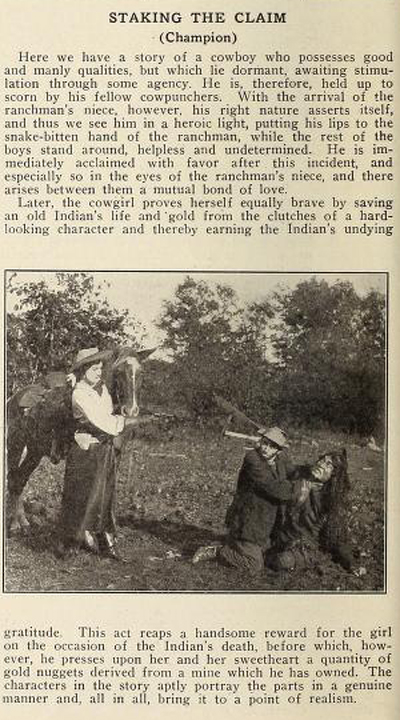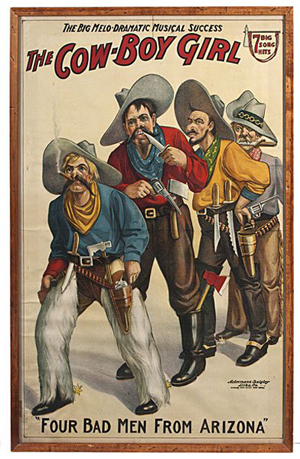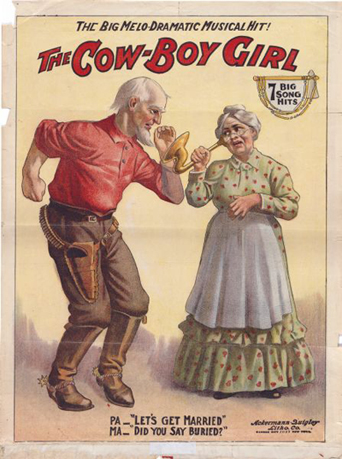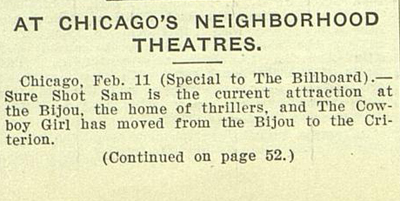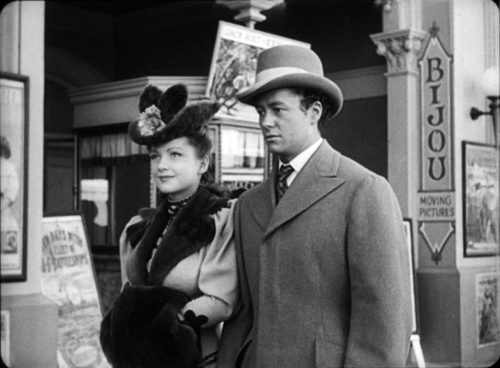Breaking AMBERSONS news: Did you say Buried?
Monday | August 18, 2014 open printable version
open printable version
DB here, again and still:
Still, until somebody comes along with a better account, I’m ready to believe that we’ve found the film.
That’s me, just two days ago. I suggested that the mystery poster tucked into the corner of one shot in The Magnificent Ambersons is the Pathé release of 1912, The Cow-Boy Girls. Readers with long memories and no life of their own will recall that this question has bugged me since my earlier post in May. Last week my colleague Eric Hoyt suggested what the title might be, and some rummaging in various sources, particularly the invaluable Lantern database, seemed to confirm it.
To recap: Here are two blow-ups from a 35mm print, showing the two angles from which Welles’ camera captures the poster. The text is clearer in the half-size one, but the more distant one yields a fuller view. The poster seems to depict a man thrashing an American Indian, with a young woman, arm outstretched, in the rear. Note also the shield-like triangular shape underneath the title on the first image.
Last night came word from two more vigilant correspondents, each with new evidence–again, unearthed by the light of Lantern.
My first correspondent was Luke McKernan, early film specialist and master builder of the vastly informative website The Bioscope. Luke has stopped posting there, but he continues to write keenly on cinema at lukemckernan.com. His message to me runs as follows:
Dear David,
I have struggled and struggled with this one til I’m at the point of worrying about my eyesight. I don’t think it can be The Cowboy Girls, but searching for the keyword Cowgirl might be productive. I found this in the Lantern site, searching for ‘cowgirl’ and 1912:
http://lantern.mediahist.org/catalog/movingpicturenew05unse_0122
It’s not the right film, but the still is quite close to that in the Ambersons poster, which at least gives encouragement.
Luke
The entry Luke refers to is this one, from The Moving Picture News of 1912.
The picture shows the situation we find in the Ambersons poster. But as Luke says, our poster’s title clearly is not Staking the Claim. More research, as we academics say, is needed.
Just a few hours later came this from another colleague here at Madison, Ph.D. candidate Eric Dienstfrey.
Hi David,
Reading your post on Ambersons now, I remember coming across the title The Cow-Boy Girl while researching stage musicals that were contemporary to Gottschalk’s The Tik-Tok Man From Oz and The Patchwork Girl of Oz. You are absolutely correct, the poster does say “The Cow-Boy Girl” but it was for a theatrical musical, not a film… at least I don’t think so. (But many films were probably called Cowboy Girl too.) I’ve attached two different posters from the musical that I found online. The triangle shield is not the Pathé rooster after all!
I hope you find this interesting/useful… or better yet, I hope this brings you a little closure.
Cheers,
Eric
I had mentioned on Saturday that there was a stage show called The Cow-Boy Girl, and I wondered whether the poster was promoting not a film but the theatre piece. In the end, I went with a film title. But Eric D’s visual evidence of the title font and the triangular motif (not a shield but a swag curtain, I think) strongly suggests that we’re dealing with a play. It would be characteristic of a theatre in 1912 to include vaudeville, stage shows, and other live entertainment alongside movies.
The Cow Boy Girl (no hyphen), a thirty-minute playlet including songs, was reviewed, unfavorably, by Variety (29 October 1910). The review doesn’t mention a scene like that depicted on the poster.
Other sources lists touring shows of The Cow-Boy Girl (with and without hyphen) from 1910 onward, so it might well have been playing the Bijou in the Ambersons’ town in 1912. Actually, Eric D. has found that it did play another Bijou. The Billboard of 18 February 1911 lists the following:
How can you argue with something that played the home of thrillers?
Are we there yet? Until we find a copy of the poster itself, I’m inclined to think so. But as Luke’s discovery indicates, we’re dealing with a period in which imagery, titles, and situations were copied and circulated in great profusion. In 1912 plenty of cowgirls and cowboys and cowboy girls and cow-boy girls were swarming over American entertainment. More or less like superheroes today.
No research project is finished, only abandoned. Thanks to the Fussbudget Team for playing!












